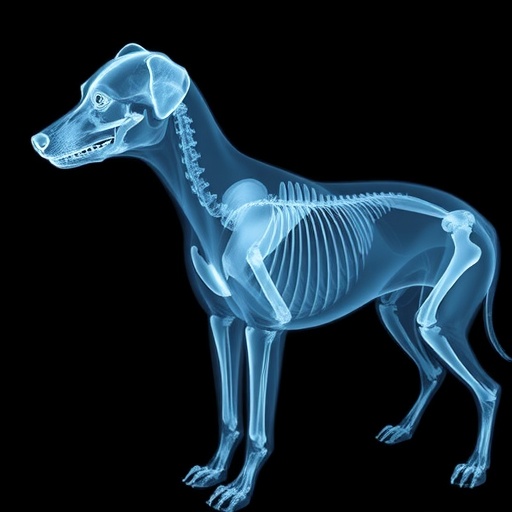
In an innovative leap at the intersection of forensic science and artificial intelligence, researchers have unveiled a groundbreaking fully automated deep learning framework designed to estimate the age of adults using periapical radiographs of canine teeth. This pioneering approach represents a significant advancement in age estimation methodologies, leveraging the power of cutting-edge neural networks to extract and interpret subtle anatomical features from dental images, which historically have been difficult to quantify with precision.
Age estimation plays a crucial role in forensic investigations, legal medicine, and anthropological studies. Accurate age determination is vital when identifying unknown individuals, verifying legal age for immigration or criminal responsibility, and contributing to human identification efforts after disasters. Traditional methods, often reliant on manual analysis that evaluates morphological and developmental markers, are inherently subjective and time-consuming. The new framework addresses these limitations by automating the process and significantly boosting accuracy through the integration of advanced deep learning models.
Periapical radiographs, which provide detailed imaging of the roots and surrounding bone structures of teeth, have traditionally been underutilized in the realm of automated age estimation. The canine teeth, with their unique morphological features that continually evolve into adulthood, represent a rich source of information. The research team capitalized on this by training deep convolutional neural networks (CNNs) to recognize nuanced dental characteristics and correlate these with chronological age, creating a robust predictive model that operates independently of human input.
.adsslot_mNjfgqUzLl{width:728px !important;height:90px !important;}
@media(max-width:1199px){ .adsslot_mNjfgqUzLl{width:468px !important;height:60px !important;}
}
@media(max-width:767px){ .adsslot_mNjfgqUzLl{width:320px !important;height:50px !important;}
}
ADVERTISEMENT
The architecture of the proposed deep learning system incorporates multiple layers designed for feature extraction, dimensionality reduction, and regression analysis. Initially, raw radiographic images undergo preprocessing to standardize illumination and remove noise, ensuring consistency across samples. Subsequently, the CNN layers engage in an automated feature learning process, discerning intricate patterns within the dental tissues — such as root transparency, pulp chamber size, and periodontal ligament space — all of which exhibit age-dependent changes.
One of the most compelling aspects of this framework is its capacity to generalize across a diverse dataset, encompassing subjects of various ages, genders, and dental conditions. This robustness stems from the system’s exposure during training to a comprehensive repository of labeled periapical radiographs, which enhances its ability to adapt to real-world variability. The resultant model consistently outperformed conventional regression techniques and manual methods, delivering precise age estimations with a mean absolute error significantly lower than previously reported standards.
Beyond forensic applications, the implications of this research extend into clinical dentistry and age-related biomedical studies. Automated age estimation from dental radiographs could inform treatment planning, contribute to assessments of biological aging processes, and support epidemiological research by providing scalable, non-invasive age data. The versatility of the framework also suggests potential for integration into mobile and remote diagnostic platforms, vastly expanding access to age estimation tools in resource-limited settings.
A notable challenge overcome by the research team involved handling the inherent variability in radiograph quality and anatomical diversity. By incorporating data augmentation techniques during training, such as rotation, scaling, and contrast adjustments, the model learned to maintain performance despite fluctuations in image capture conditions. This resilience ensures reliability in practical scenarios, where pristine imaging is often unattainable.
Central to the success of this framework is the full automation of the pipeline, eliminating the need for expert intervention at any stage. Prior methodologies typically necessitated manual segmentation or annotation, both labor-intensive and susceptible to inter-observer differences. The proposed system autonomously detects relevant anatomical landmarks, isolates the canine region, and proceeds with age estimation seamlessly, drastically reducing time and resource expenditure.
Moreover, the research underscores the ethical and legal ramifications of deploying AI-driven analyses in forensic contexts. Automated age estimation must meet rigorous standards of transparency and reproducibility to be admissible in court or official procedures. To this end, the authors emphasize the importance of continuous validation, including cross-population testing and comparison with established gold standards, ensuring that the technology maintains accuracy and fairness across demographic groups.
The framework’s scalability was demonstrated by its ability to process large volumes of radiographs efficiently, portending its utility in mass casualty situations or large-scale identification efforts. With forensic casework often constrained by limited expert availability and time pressures, the introduction of such automated solutions promises to enhance operational efficacy and deliver faster turnaround times for critical evaluations.
While the current focus is on adult populations, the methodology lays foundational groundwork for extending deep learning approaches to other dentition-based age estimation challenges, including pediatric and adolescent cohorts. Future iterations could integrate multi-modal imaging data, such as panoramic radiographs or cone-beam computed tomography, to further refine age predictions and accommodate broader forensic and clinical needs.
In summary, this fully automated deep learning framework represents a considerable stride towards modernizing age estimation in legal medicine by harnessing the untapped potential of periapical radiographs of canine teeth. By combining sophisticated image processing with AI’s powerful pattern recognition capabilities, the system delivers an unprecedented level of accuracy, speed, and autonomy. As the technology matures and integrates into forensic workflows, it holds the promise of transforming how age estimation is performed—ushering in a new era defined by precision, efficiency, and objectivity.
The scientific community and forensic practitioners alike are poised to witness the implications of such advancements unfold, as the fusion of artificial intelligence and dental radiography redefines the benchmarks of age estimation standards. This innovation not only reflects a technical achievement but also an evolution in the conceptual approach to forensic age determination, marking a vital step in bridging computational intelligence with human biological analysis.
As this technology garners attention and adoption, ongoing interdisciplinary collaboration will be essential in refining protocols, enhancing datasets, and addressing ethical considerations surrounding AI’s role in legal contexts. The potential to complement traditional forensic expertise with AI-driven tools promises a synergistic future, elevating the accuracy and reliability of age estimation in ways previously unattainable.
Ultimately, this advancement spotlights the transformative potential of deep learning in forensic sciences and beyond, signaling a new chapter where technology augments human judgment and empowers professionals with unparalleled analytical capabilities.
Subject of Research: Age estimation in adults using periapical radiographs of canine teeth through a fully automated deep learning framework.
Article Title: A fully automated deep learning framework for age estimation in adults using periapical radiographs of canine teeth.
Article References:
Upalananda, W., Phisutphithayakun, C., Assawasuksant, P. et al. A fully automated deep learning framework for age estimation in adults using periapical radiographs of canine teeth. Int J Legal Med (2025). https://doi.org/10.1007/s00414-025-03558-3
Image Credits: AI Generated
Tags: accuracy in forensic age estimationadvanced neural networks in age estimationage determination in legal medicineAI age estimation from canine X-raysautomated analysis of dental imagesautomated deep learning frameworkcanine teeth morphological featuresforensic science and artificial intelligenceimplications of age estimation for human identificationperiapical radiographs in forensic investigationstechnological advancements in forensic anthropologytraditional vs automated age estimation methods





